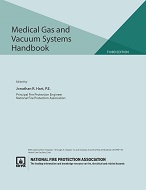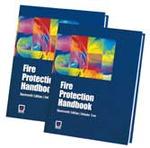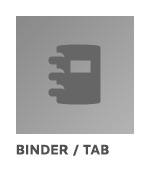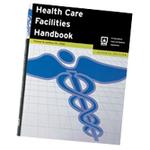Description
Apply NFPA 484 for the most advanced fire and explosion safety around all types of combustible metals and metal dusts.
Completely reorganized to align with NFPA 652, Standard on the Fundamentals of Combustible Dust, NFPA 484, Standard for Combustible Metals presents widely accepted safety requirements for any metal that meets the definition of a combustible metal in NFPA 484 — including alkali metals, aluminum, hafnium, magnesium, niobium, tantalum, titanium, and zirconium. NFPA 484 addresses the production, processing, finishing, handling, storage, use, and recycling of all metals and alloys that are in a form capable of combustion or explosion.
Make sure you understand and follow proper dust capture or collection, housekeeping, and identification of potential ignition sources.
NFPA 484 was developed in response to fires where fire suppression water was used inappropriately, often with disastrous results. The reorganized 2019 edition has added material in Chapter 1 that clarifies the application of the standard to mixtures of metals and other combustible nonmetal dusts, and updated definitions in Chapter 3 that correlate with NFPA 652. It?s important to understand that fire and explosion hazards are potentially present from operations involving production, processing, finishing, handling, recycling, storage, and use of all metals and alloys that are in a form that is capable of combustion or explosion. In addition, operations where metal or metal alloys are subjected to processing or finishing operations can produce combustible powder or dust are covered by this standard.
Changes throughout this 2019 edition help you apply requirements correctly in different work environments:
- New Chapter 4, General, includes material on objectives and compliance options, Management of Change, and PPE.
- New Chapter 7 addresses Dust Hazard Analysis.
- Updated Chapter 8 strengthens the provisions regarding static electricity. Revised requirements for electrical area classification spell out differences with NFPA 70®, National Electrical Code®, and that the NEC® zone classification system is not to be used for metal dusts.
- Chapter 11, Powder and Dust Collection and Centralized Vacuum Systems, provides greater clarity on a complex topic.
- New Chapter 12, Nanometals, and new Chapter 13, Additive Manufacturing, reflect emerging technologies and issues in the metals industry.
- Chapter 15, Legacy Metals, consolidates the common requirements for aluminum, magnesium, niobium, tantalum, titanium, zirconium, and hafnium into a single location. Material that is specific to one of these metals remains in the metal-specific chapters.
Everyone involved with facility fire safety or fire prevention and protection where combustible metals and combustible metal dusts are located needs the latest edition of NFPA 484. (Softbound, 158 pp., 2019)
Product Details
- Published:
- 05/24/2018
- Number of Pages:
- 158




